Each spring, Estuary Program staff and volunteers head out to creeks throughout the Morro Bay watershed to conduct bioassessment monitoring. This intensive monitoring effort contributes to a long-running dataset tracking creek water quality and habitat quality.
At each monitoring site, we use a standardized approach to collect nearly 1,500 measurements of habitat quality. These include things like creek width and depth, rock size, algae cover, stream slope, channel stability, and more. This information helps determine if the creek provides favorable conditions for aquatic life such as steelhead. The work also involves collecting benthic macroinvertebrates which are small insects that live on the stream bottom and are visible to the naked eye. The types of macroinvertebrates you find give you clues as to the water quality in the creek.
To learn more about our annual bioassessment monitoring effort, you can visit www.mbnep.org/bioassessment.
That’s a Wrap!
After many long days in the field, our 2024 bioassessment survey season has come to an end! Staff and volunteers surveyed ten sites throughout the watershed from April to June. These included one site each on Los Osos, Walters, Dairy, Pennington, and San Bernardo Creeks, two sites on San Luisito Creek, and three sites on Chorro Creek. Nine volunteers dedicated a total of 55 hours of their time to support this project, and the work would not have been possible without the help of the AmeriCorps Watershed Stewards Program Corpsmembers.
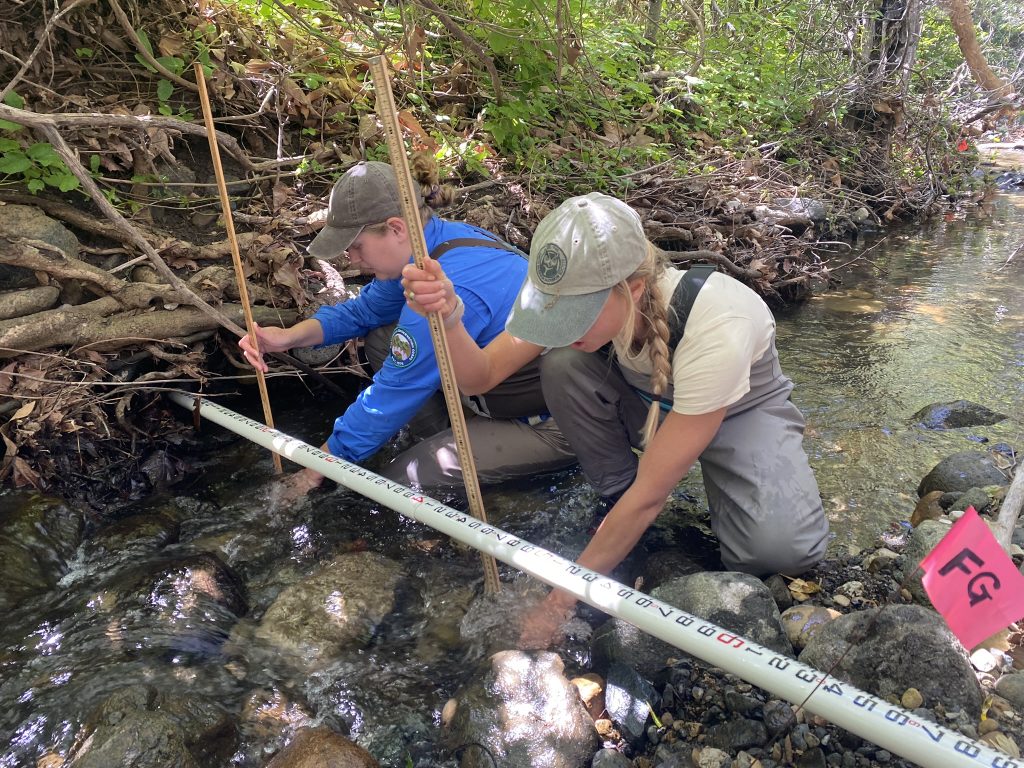
Bugs to the Lab
At each monitoring site, our team used a net to collect macroinvertebrates from the bottom of the stream. This is accomplished by placing a net in the creek and scrubbing the rocks and gravel in front of the net. This allows the macroinvertebrate larvae to drift into the net with the current.
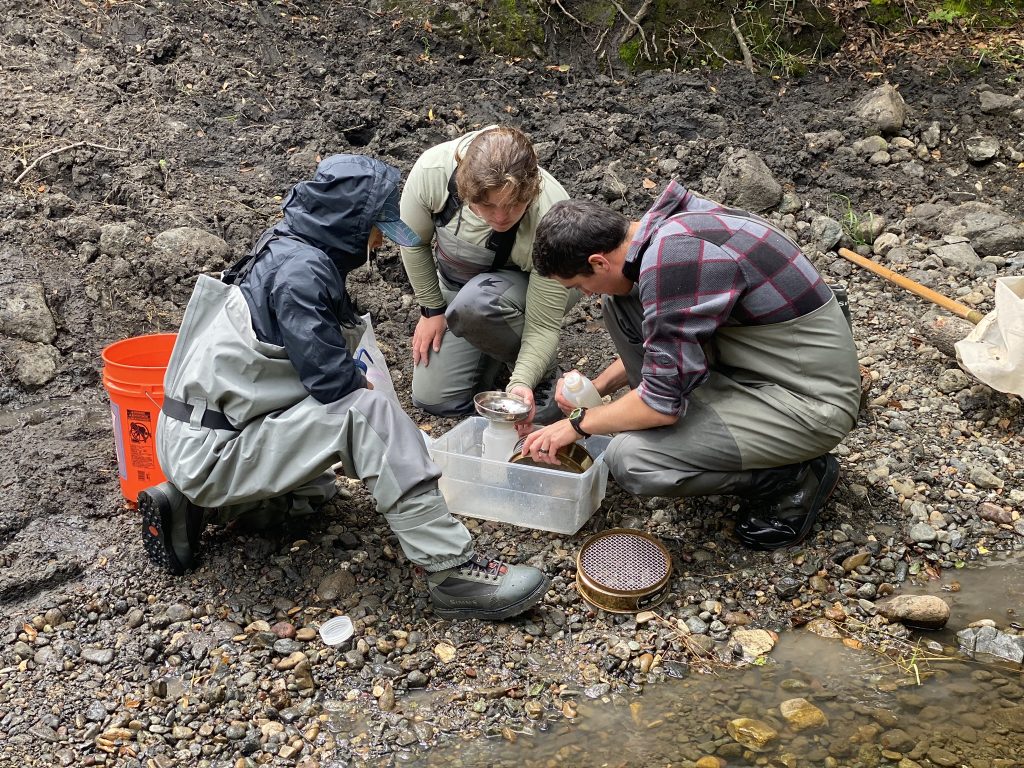
These bottom-dwelling insects provide valuable data on creek health since some species can thrive in polluted waters while others are more sensitive to pollution. If we find lots of pollution-sensitive species like caddisflies, stoneflies, or mayflies, it’s likely that the water quality is good. However, if we only find pollution-tolerant species, like midges or snails, it could indicate poor water quality conditions.
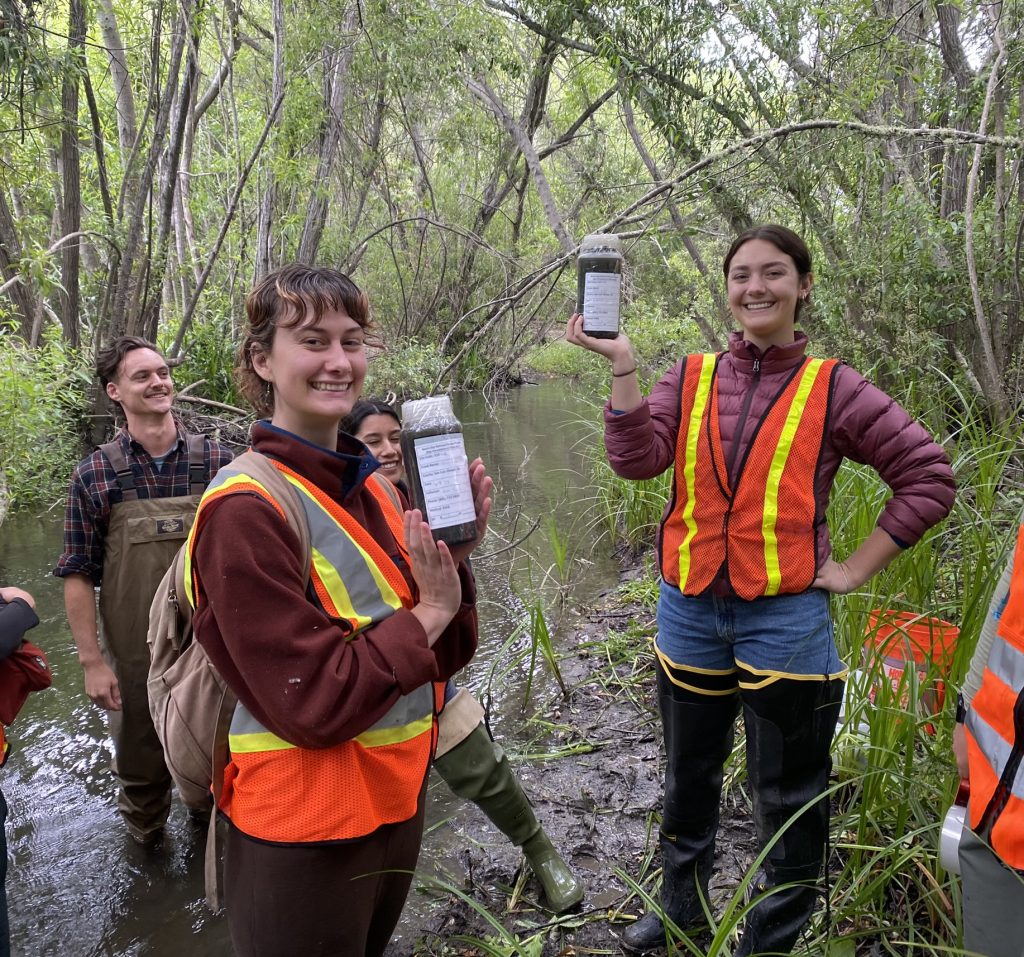
Staff and volunteers collected macroinvertebrates in the field, then bottled and preserved them for laboratory analysis. We then shipped the samples to a certified taxonomy lab for identification, counting, and sorting. The laboratory typically requires several months to complete the work, so we look forward to sharing our data in the fall!
Freshwater Finds
The shaded areas of our creeks are teeming with wildlife, as amphibians, reptiles, and fish seek refuge in the cool water. This year our team observed several unique species in the riparian canopy, including frogs, snakes, lizards, and more.
Our staff were excited to spot an adult California red-legged frog (Rana draytonii) on Dairy Creek, which feeds into Chorro Creek. While these frogs were once abundant throughout California, they have experienced a significant population decline due to urbanization, habitat loss, and non-native predation. The California red-legged frog is currently listed as federally-threatened under the Endangered Species Act.
Another exciting find for our team was a Monterey ring-necked snake (Diadophis punctatus vandenburgii) found on San Luisito Creek. Ring-necked snakes are an elusive species that are rarely seen during daylight hours. While ring-necked snakes are found throughout North America, the Monterey subspecies vandenburgii occurs only along the Central Coast of California, from southern Santa Cruz south to Ventura.
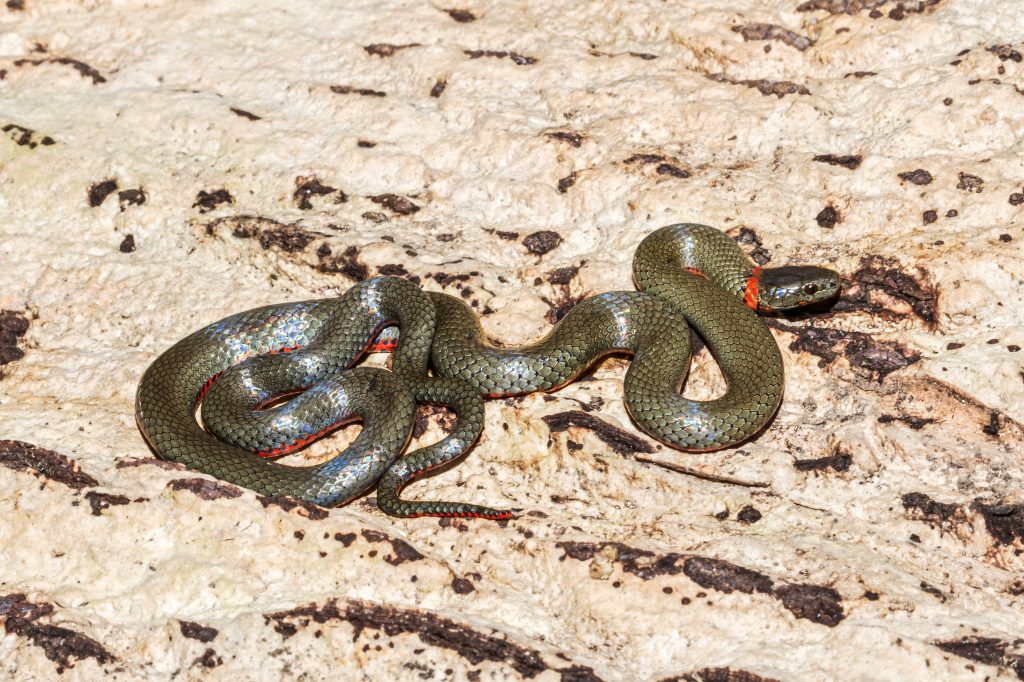
Our team also encountered several Southern alligator lizards (Elgaria multicarinata), California newts (Taricha torosa), Pacific tree frogs (Pseudacris regilla), and lots of fish!
Bioassessment in San Luis Obispo
Since 2022, the Estuary Program has supported Cal Poly and the City of San Luis Obispo to conduct bioassessment monitoring in the neighboring San Luis Obispo watershed. From 2022 to 2024, the Estuary Program’s role has been to offer expertise and technical support to the SLO team as they refine their monitoring approach.
While 2024 marked the final year of the Estuary Program’s direct support to the SLO project, the City of SLO and Cal Poly plan to continue bioassessment monitoring in 2025. Results from each year will be shared with the public through a report available from the Cal Poly Digital Commons website.
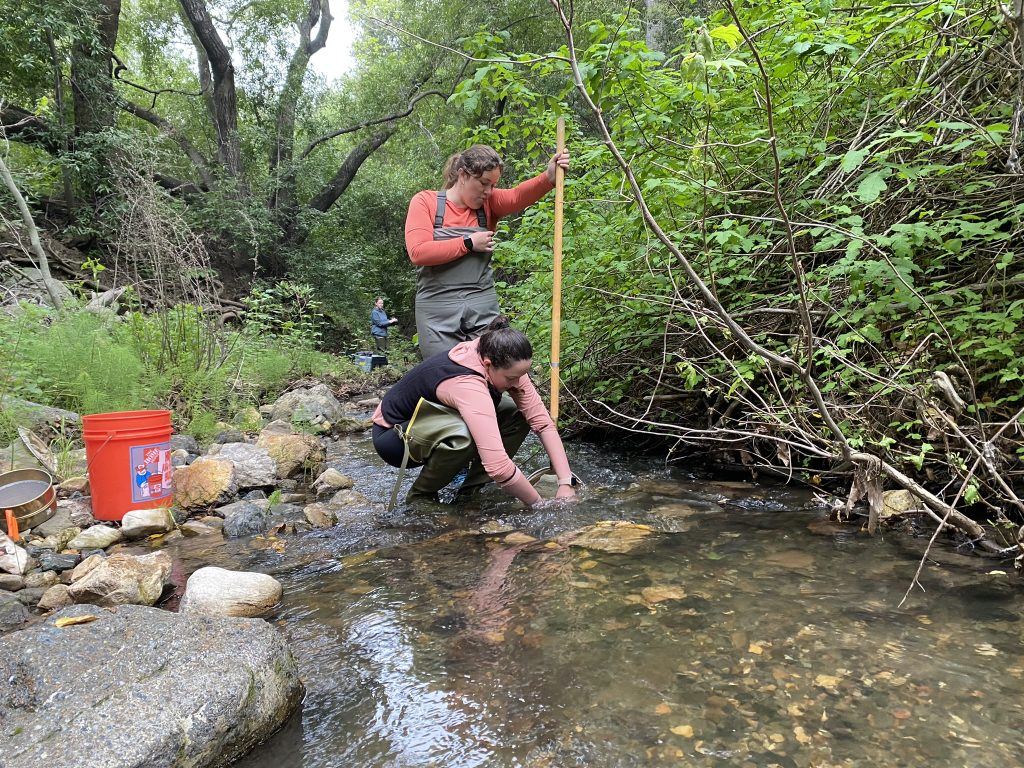
Recognizing the Miossi Trust
The Estuary Program’s bioassessment monitoring effort would not be possible without the continued support of the Harold J. Miossi Charitable Trust. Since 2013, the Trust has provided over $140,000 of critical funding to support bioassessment monitoring in the watershed. This dataset allows our program to track long-term creek health trends and prioritize conservation and restoration efforts.
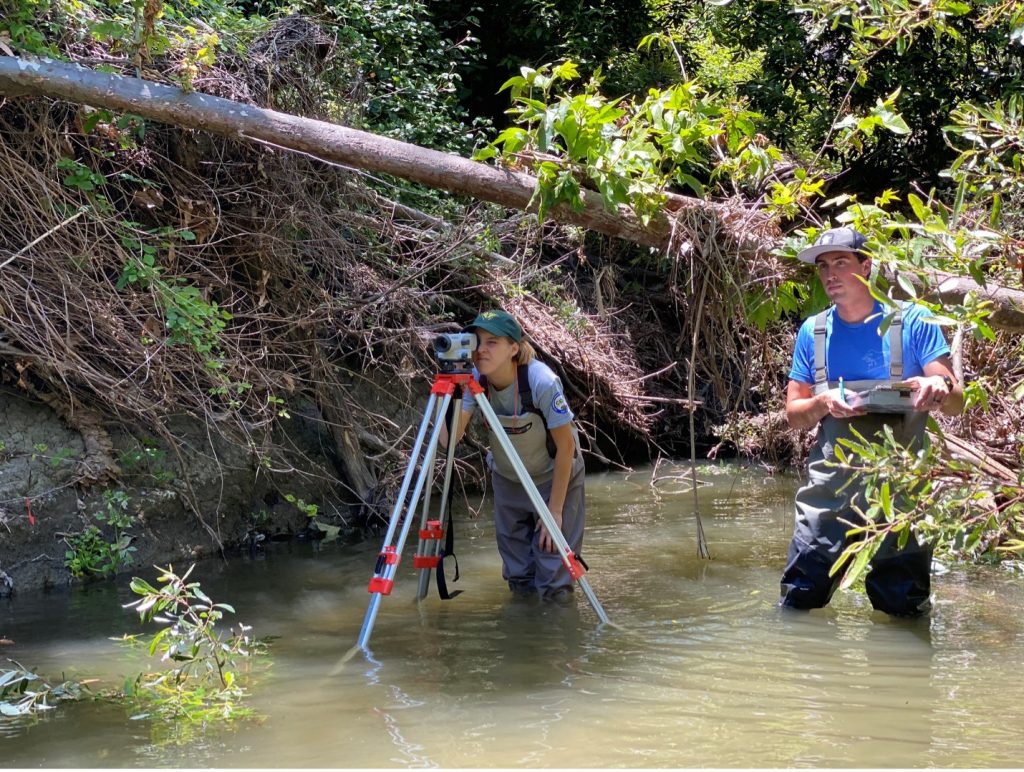
Help us protect and restore the Morro Bay estuary!
- Donate to the Estuary Program today and support our work in the field, the lab, and beyond.
The Estuary Program is a 501(c)3 nonprofit. We depend on funding from grants and generous donors to continue our work. - Support us by purchasing estuary-themed gear from ESTERO. This locally owned and operated company donates 20% of proceeds from its Estuary clothing line and 100% of Estuary decal proceeds to the Estuary Program. Thank you, ESTERO!
- Purchase items from the Estuary Program’s store on Zazzle. Zazzle prints and ships your items, and the Estuary Program receives 10% of the proceeds.
- Subscribe to our seasonal newsletter: Between the Tides!
- We want to hear from you! Please take a few minutes to fill out this short survey about what type of events you’d like to see from the Estuary Program. We appreciate your input!